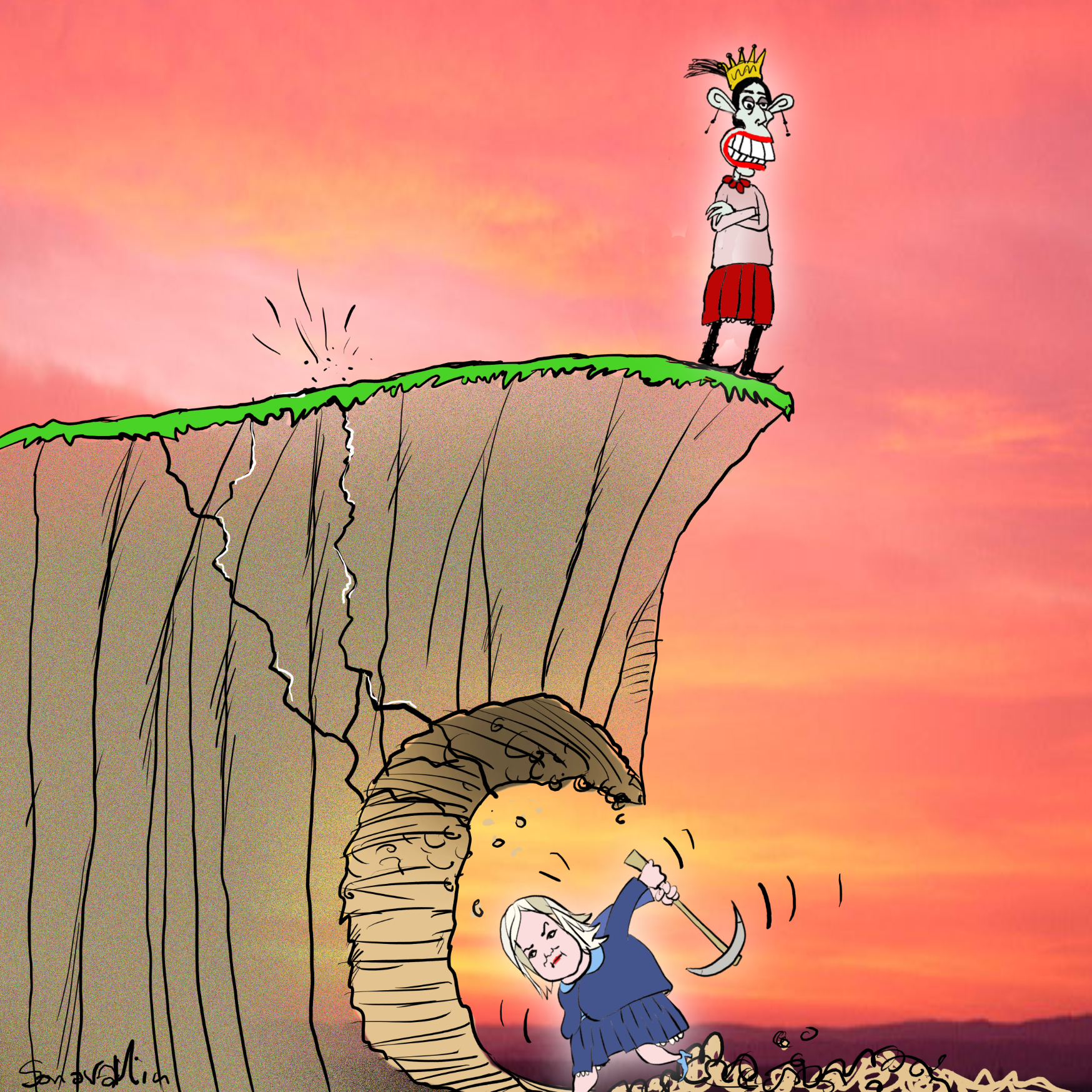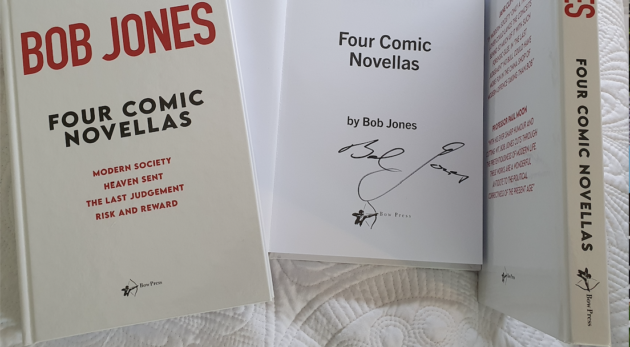Sir Bob Jones
nopunchespulled.com
I’m old enough to vividly remember every election since 1949, which ushered in the first National government.
I’d just turned ten and still recall my child’s shock on Sunday morning (the votes having been counted overnight) at the sight of my father’s tearful eyes as he listened to Peter Fraser’s concession speech. For the working classes back then, the Labour Party had religion-like status.
Consider the subsequent political pattern. National ruled for eight years, then followed a Labour government for a single term.
Then came a twelve-year National reign followed by a single Labour term.
Next came nine years of National followed by a two-term Labour government.
The standard three-term National government ensued followed by an aberrational three-term Labour government, for which oddity I’ll explain further on. Then came another three-term National government which was heading for re-election until Winston’s intervention.
What this pattern shows is the post-war years reveal National is more aligned with public sentiment than Labour. In a nutshell that reflects an antipathy to change and a natural desire for stability.
POLITICAL PARTIES
New Zealand remains primarily a two-party system.
Over these 75 post-war years, diverse other parties have risen, enjoyed some temporary success and even been an outcome factor in some cases, but essentially it’s a Labour-National divide.
First was Social Credit which emerged in the 1950s but such voting success as it enjoyed was attributable to a protest vote by traditional government supporters, fed up but unable to commit the ultimate heresy and cross to the enemy.
The Values Party appeared in 1972, as a sort of urban liberal forerunner of the Greens. It was airy fairy and quickly faded.
In 1984 the libertarian New Zealand Party captured 12½ % of the vote but was folded once the incoming Labour government immediately adopted, not just its radical economic reforms but other policies, such as lifting the school leaving age and homosexual law reform.
Then came the farcical Alliance Party, which if nothing else provided entertainment.
New Zealand First was created as a maverick political movement but was always a Winston supporters movement and enjoyed fluctuating fortunes.
Now we have the Greens, fashionable and timely but obsessed with old fashioned socialist silliness which hugely limits their support.
Public participation in the parties, specifically Party membership, reached its zenith in the 1970s when the great left-right debate was at its height.
At a time of only two TV channels, the annual three full days Party Annual Conferences were shown in full. To be a delegate in those 1000 strong conferences commanded social respect.
But with the worldwide overwhelming victory of the market economy advocates, active involvement in Parties dwindled to its present minuscule state.
A recent survey in Britain showed the National Trust has more paid-up members than all of Britain’s political parties combined, which says it all.
So what divides the habitual support for the two parties?
Labour MPs are mal-contents, unhappy with the status quo, full of ideas, and always seeking improvements and change. The Nats on the other hand are basically conservative plodders, happy with the world as they find it.
I sum it up this way. Unless one had a very high boredom threshold, one would choose a Labour MP as a dinner guest but a National MP as a neighbour, assuming you sought peace and quiet.
People basically don’t like change and seek certainty and stability which is what National offers, namely when in government to simply mind the shop.
But after three or in the case of the Holyoake government, four terms, the time for a change mood, driven by the political pendulum, sees a short term Labour government.
Excited with their newfound unfamiliar power they proceed to turn the world on its head and usually enjoying initial public support, but very soon the overriding quest for stability and certainty takes over and after a single term, or the Lange government’s two terms, it’s back to dull stability.
The exception was the Clark government’s three terms and is easily explained. Helen adopted the Nats “don’t frighten the horses” approach and simply minded the shop, doing nothing radical.
That said it’s Labour governments’ activism which have shaped New Zealand, commencing with the first in 1935, creating our welfare state.
Although it’s never recognised, the 1957-1960 Nash government was singularly responsible for the creation of our now significant manufacturing industries. Until then virtually all manufactured goods were imported. Possessing an import license was owning gold.
The then Minister of Industries and Commerce, Phil Holloway, introduced high tariff walls resulting almost overnight in booming new industries flowering. I know as back then I owned dozens of the newly built industrial buildings for which there were always ready takers.
And typically, it took a Labour government and specifically Roger Douglas, to remove the tariffs when timely, for everyone’s betterment. Surprisingly, few of the new industries failed in the face of world competition. So too with removal of farmer subsides which left in its wake a robust agricultural industry not dependent on the taxpayer.
Can I say anything good about National governments other than the much desired minding the shop stability?
The 1949 Holland government removed food rationing. It was a ridiculous situation. When as a small boy I was sent to buy a pound of butter, my mother would tear off a ration ticket. Why? We, seemingly under the impression the war was still on, were ludicrously giving our food production priority to Britain.
That government also basically funded state house occupants to buy their homes, this in line with National’s founding principle of creating a home-owning democracy. Margaret Thatcher was much praised for a similar exercise twenty-five years later but it was a New Zealand National government innovation.
The twelve-year Holyoake-Marshall government took doing nothing radical to an art form. It suited the mood of the times. Their only innovative action was introducing decimal coinage, that by the newly appointed Finance Minister, Rob Muldoon.
The Bolger government ended the debilitating compulsory unionism but otherwise was a disaster, creating an unnecessary recession by their mindless support for the Reserve Bank Act. This madness aimed at preventing inflation, a price phenomenon brought about by demand exceeding supply, squashed demand rather than increasing supply. The result was an exodus of our best and brightest mainly to Australia.
The incoming Clark government quickly reversed this and within a year, the economy boomed.
The Key government was the ultimate just minding the shop administration, boosted by the Christchurch earthquake insurance-paid rebuild and as with Jacinda and Covid, a public deference accorded leaders during crises.
LEADERSHIP
Far too much weight is placed on leadership. If you think Jacindamania is over the top then it’s nothing compared to the fervour Muldoon attracted from 1974 for three years, before disappointment sets in, as it’s now doing with Jacinda.
Holland, Nash, Holyoake, Bolger and Clark never commanded public enthusiasm. As a political factor leadership it’s overstated by journalists.
Aside from that the old saw, “the office makes the man” (or woman) remains true, thus the most mundane personality, such as Bill English for example, can seem perfectly adequate once on the throne.
Another appropriate adage from boxing applies; “the bigger you are, the harder you will fall”.
It was part of Helen Clark’s success. She was never worshipped like Muldoon and Jacinda thus high expectations didn’t arise and as a result no potential to disappoint. One of the most revered leaders was Churchill, yet shortly after the war was over he was swept out of office.
WHY THE GOVERNMENT WILL LOSE THE NEXT ELECTION
First, ignore their huge majority of MPs. Half will disappear. The last election was at the height of the Covid panic which saw Jacinda on television daily to an unprecedented degree in an election campaign. This compounded her already ludicrous Joan of Arc image after the mosque murders.
Repeatedly the media claimed she’d handled three crises, the second being White Island. I’ve offered $1m to anyone who can tell me what she did re that, to date with no takers.
It was simply Jacindamania gone berserk.
Add to that leadership change and MP scandals at the time for the Nats and the 1990 landslide was explicable.
An irony of Jacindamania was it also swept New Zealand First which had put them into government, into political oblivion. But today’s rumbling discontent everywhere reminds me of the mood in 1983.
The public are plainly awake to the government’s utterly inept handling of the vaccine supply and worse, to the regrettable fact they have been lied to about this.
There’s genuine anger about so many things now, whether it’s the spectacular non-performance on vaccines and housing, the ridiculous closure of our borders to vaccinated, workers, tourists or students, the introduction of race-based laws, the irresponsible proposal of a $700 million cycle bridge, the rage of farmers, nurses, the renaming of the country by anonymous public servants and well, just so many things.
It’s reasonable to assume the Nats will get their house in order over the next two years and will attract suitable candidates. Thus, as always follows hyper-active Labour governments, they will be swept back in by a nation craving a return to dull normality.
These are detached observations from someone who last voted National in 1981 so don’t assume I’m plumping for them.
To summarise; the overwhelming human desire everywhere is for stability and certainty.
We’ve lived through tumultuous events since the 2017 election which focuses attention heavily on the government.
But in two years time, the pendulum will be stretched and will swing back hard, indeed overswing and see the wipe-out of as many as half of Labour’s. That’s what our history over the last 75 years reveals.
BUY Your Own First Edition Hardcover Signed Copy of Sir Bob’s Latest Book Today.
Please share so others can discover The BFD.


